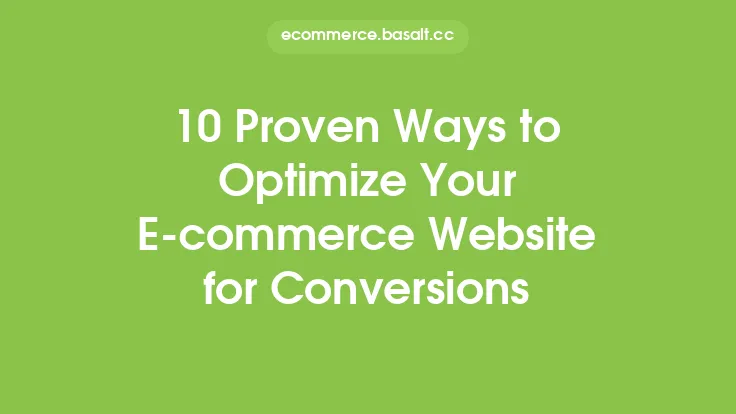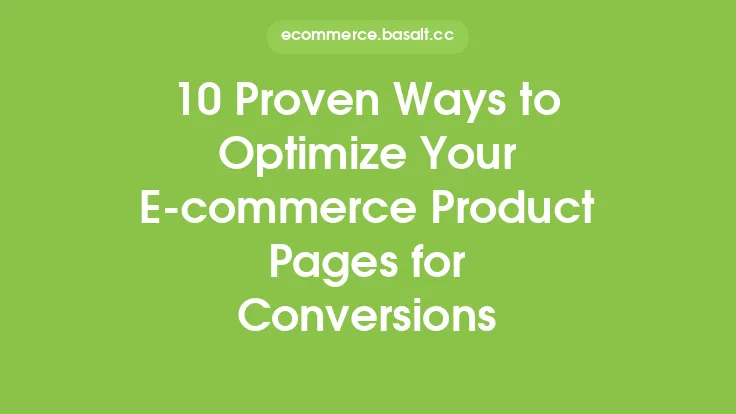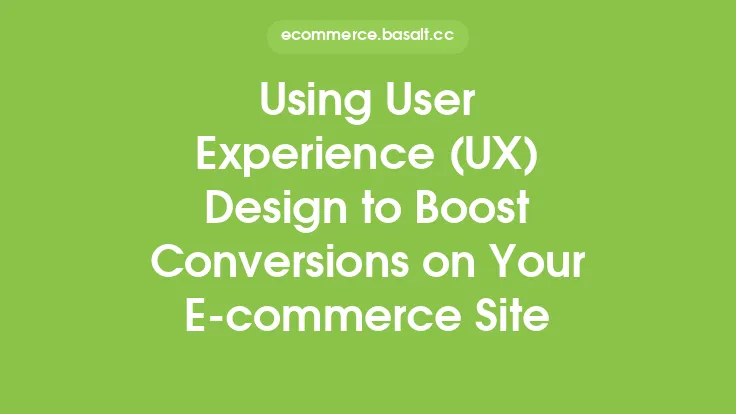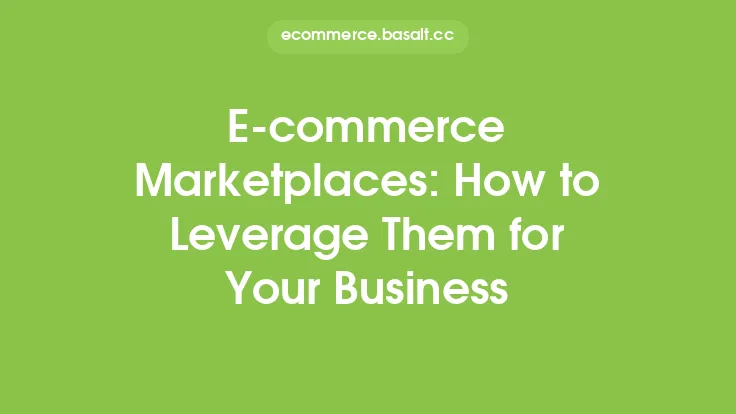As an e-commerce business owner, having a strong online presence is crucial for driving sales and revenue. One of the most effective ways to increase your website's visibility and attract more customers is through search engine optimization (SEO). SEO is the process of optimizing your website to rank higher in search engine results pages (SERPs) for specific keywords and phrases. In this article, we will provide you with 10 SEO tips to boost your e-commerce website's visibility and help you stay ahead of the competition.
Introduction to SEO Fundamentals
Before we dive into the tips, it's essential to understand the fundamentals of SEO. SEO is based on three main pillars: relevance, authority, and user experience. Relevance refers to how well your website's content matches the search query. Authority refers to the credibility and trustworthiness of your website. User experience refers to how easy it is for users to navigate and find what they're looking for on your website. Search engines like Google use algorithms to analyze these factors and rank websites accordingly.
Keyword Optimization Strategies
Keyword optimization is a critical aspect of SEO. It involves using relevant keywords and phrases in your website's content to help search engines understand what your website is about. Here are a few keyword optimization strategies to keep in mind:
- Use long-tail keywords: Long-tail keywords are more specific phrases that have lower competition and higher conversion rates.
- Use keyword variations: Use different variations of your target keywords to avoid repetition and improve relevance.
- Use keywords in meta tags: Use keywords in your meta title, description, and headings to help search engines understand your content.
On-Page Optimization Techniques
On-page optimization refers to the process of optimizing individual web pages to rank higher in search engines. Here are a few on-page optimization techniques to keep in mind:
- Optimize images: Use descriptive alt tags and file names that include target keywords.
- Use internal linking: Use internal linking to help users and search engines navigate your website.
- Use header tags: Use header tags (H1, H2, H3, etc.) to structure your content and highlight important keywords.
Content Creation and Marketing
Content creation and marketing are essential for attracting and engaging with your target audience. Here are a few content creation and marketing strategies to keep in mind:
- Create high-quality content: Create content that is informative, engaging, and relevant to your target audience.
- Use content marketing: Use content marketing to attract and engage with your target audience, and to build backlinks to your website.
- Use guest blogging: Use guest blogging to build backlinks and increase your website's authority.
Link Building and Outreach
Link building and outreach are critical for increasing your website's authority and ranking higher in search engines. Here are a few link building and outreach strategies to keep in mind:
- Build high-quality backlinks: Build backlinks from high-quality websites that are relevant to your niche.
- Use outreach: Use outreach to build relationships with other websites and to acquire backlinks.
- Use resource pages: Use resource pages to build backlinks and increase your website's authority.
Technical SEO Best Practices
Technical SEO refers to the process of optimizing your website's technical aspects to improve its visibility and ranking. Here are a few technical SEO best practices to keep in mind:
- Use SSL encryption: Use SSL encryption to secure your website and protect user data.
- Use page speed optimization: Use page speed optimization to improve your website's loading speed and user experience.
- Use mobile-friendliness: Use mobile-friendliness to improve your website's visibility and user experience on mobile devices.
Local SEO Strategies
Local SEO refers to the process of optimizing your website for local search queries. Here are a few local SEO strategies to keep in mind:
- Use Google My Business: Use Google My Business to claim and optimize your business listing.
- Use local keywords: Use local keywords and phrases to help search engines understand your website's location and relevance.
- Use local citations: Use local citations to build backlinks and increase your website's authority.
Analytics and Tracking
Analytics and tracking are essential for measuring your website's performance and making data-driven decisions. Here are a few analytics and tracking strategies to keep in mind:
- Use Google Analytics: Use Google Analytics to track your website's traffic, engagement, and conversion rates.
- Use SEO tools: Use SEO tools like Ahrefs, SEMrush, or Moz to track your website's ranking, backlinks, and technical SEO.
- Use tracking codes: Use tracking codes to measure the effectiveness of your marketing campaigns and to track user behavior.
Common SEO Mistakes to Avoid
Finally, here are a few common SEO mistakes to avoid:
- Keyword stuffing: Avoid using too many keywords in your content, as this can lead to penalties and decreased ranking.
- Duplicate content: Avoid duplicating content across multiple pages, as this can lead to decreased ranking and user experience.
- Slow loading speed: Avoid having a slow loading speed, as this can lead to decreased user experience and ranking.
Conclusion and Next Steps
In conclusion, SEO is a critical aspect of e-commerce marketing that can help increase your website's visibility, drive more sales, and revenue. By following the 10 SEO tips outlined in this article, you can improve your website's relevance, authority, and user experience, and stay ahead of the competition. Remember to always keep your target audience in mind, and to use data-driven decision making to measure and improve your SEO efforts. With the ever-changing landscape of search engine algorithms and user behavior, it's essential to stay up-to-date with the latest SEO best practices and trends to ensure long-term success.





